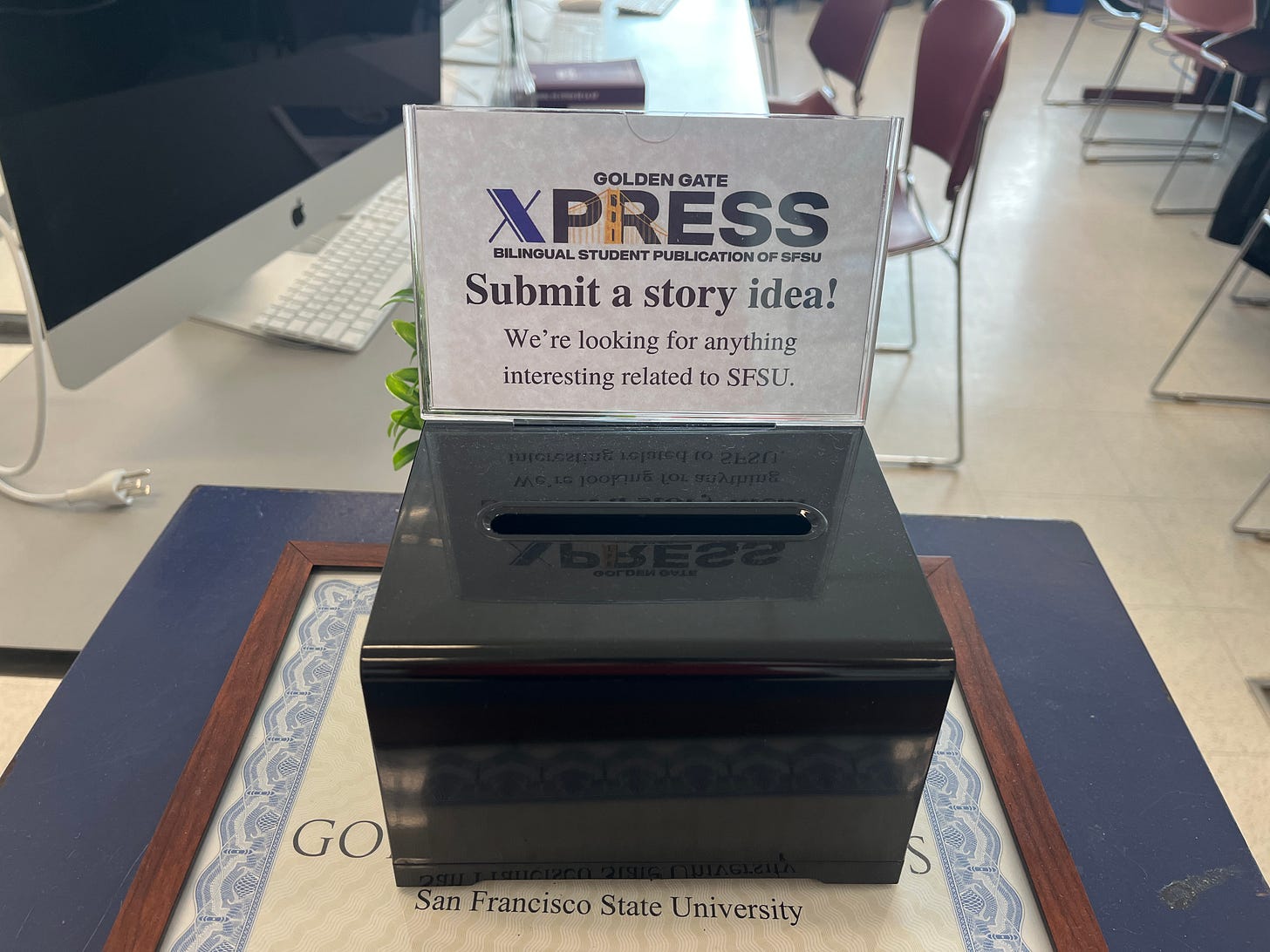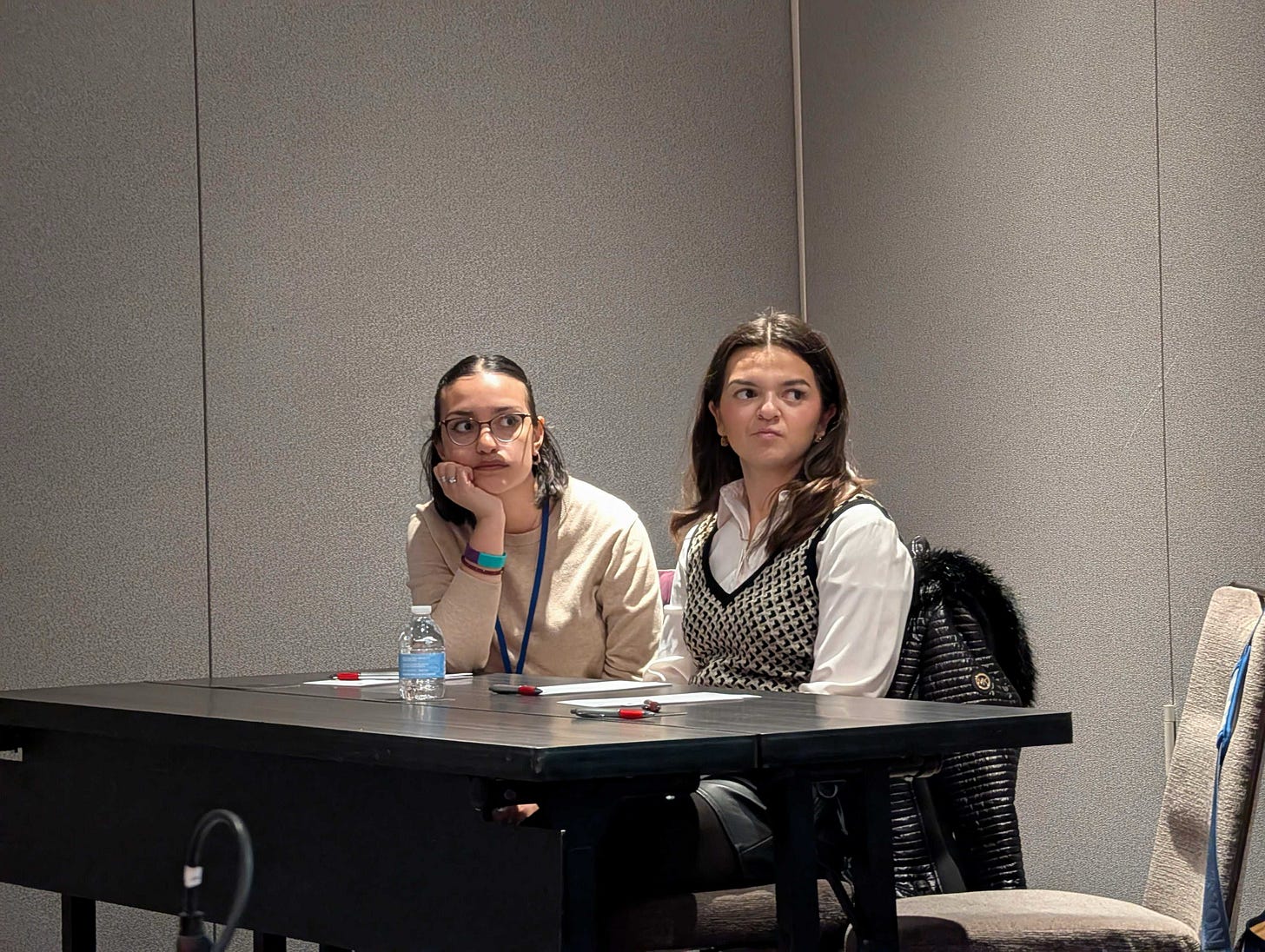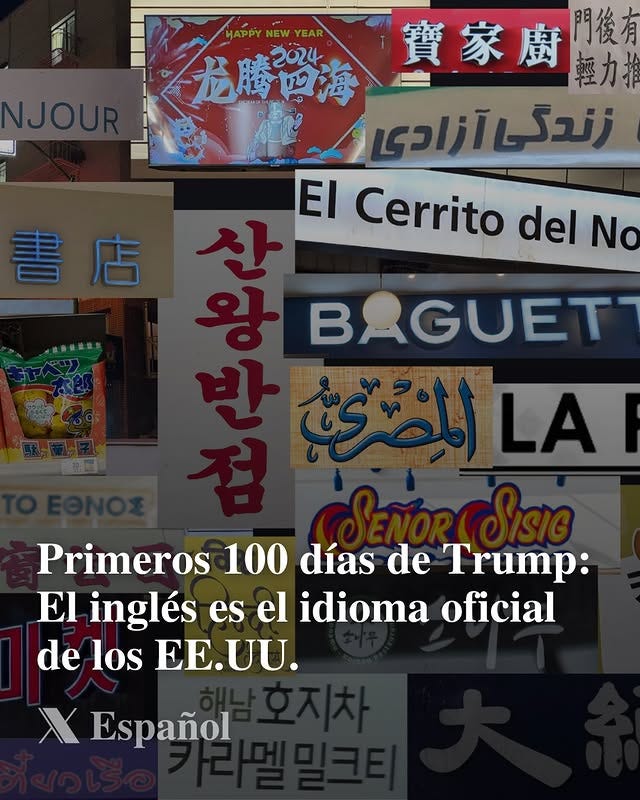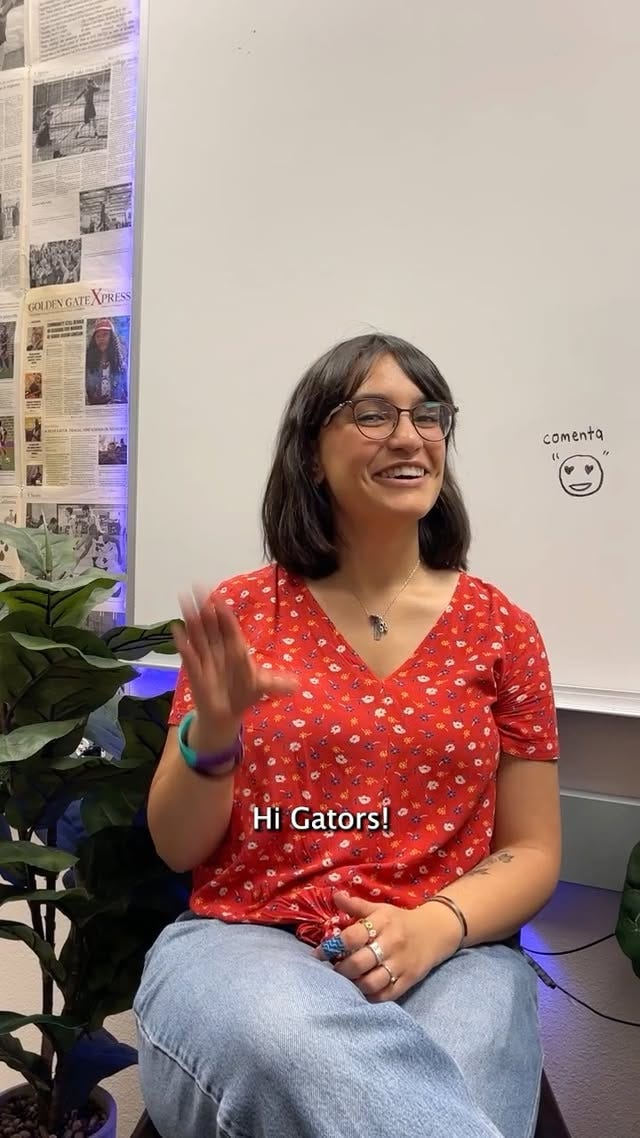Golden Gate Xpress delivers news in two languages to better serve its community
Two San Francisco student editors lead growing bilingual coverage for campus and local Latino audiences

When Sophia Rerucha and Melissa Garcia interview a Spanish-speaking professor or record a Spanish-language Instagram Reel, they’re not just checking a box — they’re honoring a language, a culture and a community often overlooked in student media.
At San Francisco State University, where the majority of students are Hispanic, the student-run Golden Gate Xpress is leading a growing effort to publish stories in both English and Spanish.
“I can just tell that it’s a good opportunity for them to express themselves in the language that they’re most comfortable speaking in,” said Rerucha, the newspaper’s Spanish editor. “I’m proud of what we’re doing.”
The effort in California — one of the states with the largest share of Hispanic and Latino residents — takes place amid concerns about language equity as the White House designated English as its official language, a move that could reduce resources for non-English speakers.
“With the Trump administration right now, there’s a lot of topics that are intertwined with language, so it’s important to have that available for students,” Rerucha said.
Garcia, the newspaper’s digital editor, said the bilingual work also helps serve the broader Hispanic community in San Francisco, especially in the Mission District, a Latino cultural district.
This year, the Xpress’ Spanish team has covered stories like the local “Hands Off” protest, the reduction of bus services and immigration policies. They also produce Instagram Reels to recap the week’s news in Spanish.
The entire Spanish-language section is run by just two editors — Rerucha and Garcia — out of a 31-person newsroom. Rerucha decides which stories are covered in Spanish. While there’s no set formula, she said it comes down to relevance.
“This isn’t really a good measure, but if I feel that (something) needs to be in Spanish, then I’ll write it in Spanish,” she said.
For instance, she recently attended an event about food and diet decolonization but didn’t feel it needed a Spanish version. Sometimes, the deciding factor is whether the source is a Spanish speaker.
Most stories start in English, and both Rerucha and Garcia work together to translate them.
The challenge of accurate translation
Translating colloquialisms is one of the toughest parts of the job, Rerucha said.
Certain Spanish slang terms wouldn’t make sense if translated literally into English — and vice versa. Cultural knowledge is key.
“And also making it journalistic and professional, on top of that,” she said.
Garcia said her approach is to search for alternate adjectives or phrasings that better reflect the meaning of the original sentence.
In a recent profile of two siblings who run a successful clothing brand in the Mission District, for example, Garcia conducted interviews in English and got a quote saying: “I’m very proud for them for stepping up their game.”
But she said the phrase “stepping up their game” wouldn’t make sense if they were to translate it directly.
She ended up writing: “Estoy bien orgulloso de que están elevando su negocio” in the Spanish version, which translated to “I'm very proud that they are growing their business.”
During election coverage last year, Rerucha said they spent extra time researching how to translate terms that wouldn’t easily carry over between the U.S. and Mexican political systems.
“There are certain words that you would use in Mexico, but they don’t really apply in the U.S.,” she said, noting that finding equivalent language helped readers better understand the significance of the election.

Engaging the community
Though English-language stories tend to perform better — for example, the bus service story received about 5,000 views in English and 1,000 in Spanish, according to Garcia — the Spanish section has been well received on campus.
“The campus is very welcoming and they want that extra coverage, that extra voice,” Garcia said. “It’s been pretty inviting and I don’t think anybody rejected our work.”
Like many student-run publications, feedback often comes organically. Both editors attend campus events, stay involved in student organizations and hear story ideas through word-of-mouth.
“One of the girls we know, we were eating lunch, and she just came up to us and she just told us what’s going on,” Rerucha said. “That’s really how you get stories — knowing the people that are actually doing the work.”
Garcia added that the newsroom has a dropbox in the hallway for anonymous tips and coverage suggestions.
“Whatever I do in my work, I want to have it be bilingual Spanish because I feel that it’s important to cater to Spanish-speaking communities,” Garcia said. “The connection I get with them is also so rewarding because you’re able to hear their stories, hear what they’re doing in their communities and share that with others.”
💬 I want to hear from you! Have you ever struggled to cover a story because of a language barrier? How did you handle it? Email me at nutgrafnews@gmail.com.
Story Spotlight:
📧 The Orion at California State University, Chico, filed a record request and found emails where a university spokesperson described student journalists as “entitled and demanding.” The editorial board responded, “Yes, we embrace the notion that we are ‘entitled’ — to public information. Yes, we are ‘demanding’ — because journalism demands persistence and accountability.”
🤐 Student newsrooms are forced to adapt as writers resign and request the takedown of stories to avoid potential repercussions, The Guardian reported. The requests ranged from sources seeking anonymity to opinion writers wanting their names removed, and even demands to blur out identifying images.
As student journalists grapple with publishing protesters’ names, check out The Nutgraf’s previous reporting on The Purdue Exponent, the first student newspaper to announce it was erasing names in February.
📰 The old model saw journalism students learning in class, contributing to campus media and gaining experience through internships. But as local newsrooms shrink, that dynamic has flipped — students are now helping fill coverage gaps at short-staffed outlets as part of their coursework.
✨ As funding for The Observer at Central Washington University is threatened, community members flooded social media with supporting messages for the newsroom. Check out the newspaper’s front page below:
Featured Opportunities:
Scripps Howard Fund Nonprofit Newsrooms Internship Program accepts applications for the fall cohort until April 18.
The Ben Bagdikian Fellowship Program at Mother Jones accepts applications until April 20.
The Connecticut SPJ is offering scholarships for Connecticut journalism juniors and seniors. Apply before April 20.
The Tri-City Herald in Washington is looking for a summer news intern.
KERA, Dallas’s NPR station, is hiring a graphic design intern.
CBS/Telemundo Austin is hiring a summer news intern.
Applications are open for the 2025 Power 104.7 Media Lab until May 12 for Ramsey County, Minnesota, residents.
Apply to this New Jersey State House News Service internship to report from Trenton in the fall.
The National Association of Hispanic Journalists is hosting its 2025 Student Summit in Chicago April 26. Registration is free for students.
The American Society of Business Publication Editors offers free memberships to student journalists and invites you to attend its virtual conference, ASBPEvolve: The Biggest B2B Editorial Summit, for free May 28-30. Register before May 26.










thank you chatwan!! melissa and I love this <3